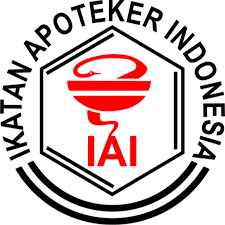Ethanolic Extract of Papaya Leaves (Carica papaya) and its Fractions have no Potential Cytotoxicity on T47D Cells
Ratna Yuliani(1*), Faisal Syahdeni(2)(1) (SCOPUS ID: 57208158594), Faculty of Pharmacy, Universitas Muhammadiyah Surakarta
(2) Faculty of Pharmacy, Universitas Muhammadiyah Surakarta Jl. A Yani Tromol Pos 1, Pabelan, Kartasura, Surakarta, Indonesia
(*) Corresponding Author
Abstract
Breast cancer is one type of cancer that causes high mortality rate in women. Plants produce secondary metabolites with a wide range of activity, one of which is as an anticancer. This research was conducted to investigate the cytotoxic effect of ethanolic extract of papaya leaves (Carica papaya) and its fractions on T47D cell line. Extraction of the natural compounds from papaya leaves was carried out by soaking the leaf powder in 96% ethanol followed by filtration and solvent evaporation. Liquid partition was done to obtain hexane, ethyl acetate, and water fractions. The cytotoxicity of the extract and the fractions was tested using MTT assay. Identification of chemical compounds in the ethyl acetate fraction was conducted using a thin layer chromatography method that used silica gel GF 254 as the stationary phase and acetone and hexane (4:6) as the mobile phase. The MTT assay result shows that the extract does not inhibit the growth of T47D cells. The viability of T47D cells can be reduced by the hexane, ethyl acetate, and water fractions with IC50 values of 2,231.30, 557.33, and 2,112.81 g/mL, respectively. The ethyl acetate fraction contains flavonoids, alkaloids, phenolics, and terpenoids. The ethanolic extract of papaya leaves and the fractions has no potential cytotoxicity on T47D cells due to high IC50 values.
Keywords
Full Text:
PDFReferences
Alldredge, B.K., Corelli, R.L., Ernst, M.E., Guglielmo, B.J., Jacobson, P.A., Kradjan, W.A., dan Williams, B.R., 2013. Applied Therapeutics: The Clinical Use of Drugs, Tenth edition, Lippincott Williams & Wilkins: Philadelphia.
Amalia, P.K., 2016. Uji aktivitas sitotoksik ekstrak etanol daun keladi tikus (Typonium flagelliforme L.), kemangi (Ocimum sanctum L.), dan pepaya (Carica papaya L.) terhadap sel MCF-7, Naskah Publikasi, Fakultas Farmasi, Universitas Muhammadiyah Surakarta.
El Azim, M.H.M.A., El-Mesallamy, A.M.D., Hussein, S.A.M., dan El-Gerby, M., 2014. Phenolic composition and biological activities of methanolic extract of Carica papaya, Natural Product: An Indian Journal, 10(5), pp. 163-170.
Hariyanti, S., 2018. Uji sitotoksik ekstrak etanol daun pepaya (Carica papaya) terhadap sel MCF-7 dan sel T47D. Naskah Publikasi, Fakultas Farmasi, Universitas Muhammadiyah Surakarta.
International Agency for Research on Cancer, 2019. Estimated number of death in 2018, worldwide, all cancers, females, all ages, available online: http://gco.iarc.fr/today/ [12 April 2019].
International Agency for Research on Cancer, 2020a. Estimated number of prevalent cases (5-year) in 2018, worldwide, all cancer, all ages, available online: http://gco.iarc.fr/today/ [5 March 2020].
International Agency for Research on Cancer, 2020b. Estimated number of new cases in 2018, worldwide, all cancers, females, all ages, available online: http://gco.iarc.fr/today/ [5 March 2020].
International Agency for Research on Cancer, 2020c. Estimated number of death in 2018, asia, indonesia, all cancers, females, all ages, available online: http://gco.iarc.fr/today/ [5 March 2020].
Kurniasari, D., Kusmardi, and Sunaryo, H., n.d. Uji sitotoksik fraksi etil asetat dan fraksi etanol ekstrak etanol daun pepaya (Carica papaya L.) terhadap sel kanker payudara MCF-7.
Joseph, B., Sankarganesh, P., Ichiyama, K., and Yamamoto, N., 2014. In vitro study on cytotoxic effect and anti-DENV2 activity of Carica papaya L. leaf., Frontiers in Life Science, 8(1), pp.18-22.
Nguyen, T.T., Parat, M-O, Hodson, M.P., Pan, J., Shaw, P.N., Hewavitharana, A.K., 2015. Chemical characterization and in vitro cytotoxicity on squamous cell carcinoma cells of Carica papaya leaf extracts, Toxins, 8(7), pp. 1-11.
Nugroho, A., Heryani, H., Choi, J.S., and Park, H-J., 2017. Identification and quantification of flavonoids in Carica papaya leaf and peroxynitrile-scavenging activity, Asian Pacific Journal of Tropical Biomedicine, 7 (3), 208-213.
Nurgali, K., Jagoe, R.T., and Abalo, R., 2018. Adverse effects of cancer chemotherapy: anything new to improve tolerance and reduce sequelae?, Frontiers in Pharmacology, 9(245), pp. 1-3.
Patil, T., Patil, S., Patil, A., and Patil, S., 2014. Carica papaya leaf extracts-an ethnomedicinal boon, International Journal of Pharmacognosy and Phytochemical Research, 6(20), pp. 260-265.
Putri, H., 2013. Protokol: uji sitotoksik metode MTT, Cancer Chemoprevention Research Center, Fakultas Farmasi, UGM.
Rashed, K.N. and Fouche, G., 2013. Anticancer activity of Carica papaya extracts in vito and phytochemical analysis, Greener Journal of Pharmacy and Pharmacology, 1(1), pp. 001-005.
Ruddon, R.W., 2007. Cancer Biology, Fourth edition, Oxford University Press.
Sushmita, H.S., Rajesh, V., Madappa, M.B, and Sathyamurthy, B., 2018. A comparative study on characterisation of various extracts of Carica papaya leaves, European Journal of Pharmaceutical and Medical Research, 5(6), pp. 401-407.
Vijayarathna, S. and Sasidharan, S., 2012. Cytotoxicity of methanol extracts of Elaeis guineensis on MCF-7 and vero cell lines, Asian Pasific Journal of Tropical Biomedicine, 2(10), pp. 826-829.
Wagner, H. and Bladt, S., 2001. Plant drug analysis. A thin layer chromatography atlas, second edition. Berlin: Springer.
Article Metrics
Abstract view(s): 1292 time(s)PDF: 807 time(s)
Refbacks
- There are currently no refbacks.








